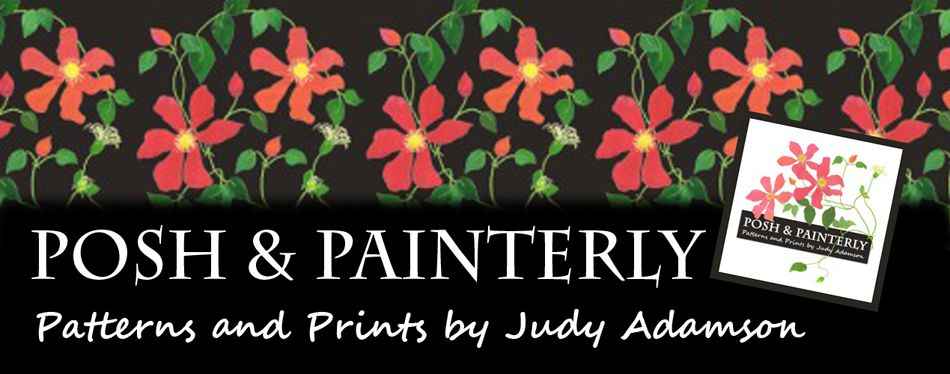My eldest daughter was
born in the late Sixties which I realise, with hindsight, was a time
of momentous change in the world of Children's Books.
I'll freely admit that
I never much enjoyed reading my children their bedtime stories but I
was constantly drawn to the illustrations! My favourite was EzraJack Keats but it was only relatively recently that I discovered that his
illustrations were made from handpainted paper collage.
Painted paper collage
seems to be a popular medium with children's book illustrators and
when I decided to have a go at making a collage myself, I found Eric Carle's demonstrations really helpful.
And it's really quite a
simple process - you just cut out the shapes and glue them onto a
sturdy background!
My very first attempt
was really far too ambitious for a beginner and involved some drawing
and the use of tracing paper to place the pieces where they were
supposed to go.
But if you stick to
something simple, such as imaginary flowers, you don't even need to
be able to draw!
So, in case you'd like
to give it a try, here are a few hints and tips -
Here's what you'll need
- Tissue paper or any kind of fairly thin paper.
- Paint - children's ready-mixed paints in pots, acrylics or gouache
- Big paintbrush
- Newspaper to protect surfaces
- Craft Knife
- Scissors
- Glue - pva or any craft clue. I used wall paper paste for my first attempt and it wasn't too bad.
- A sheet of card, probably best to start with something about A4 size
- A cutting mat or surface that doesn't matter if it gets scratched
- Craft tweezers (optional)
First paint your papers -
leaving plenty of time for them to dry thoroughly before you plan to use them.
Use the thickest, widest or fattest brush you can find and don't make the paint too watery or your brush will tear the wet tissue paper. Paint a good selection of colours, including several shades of green if you are going to make a floral collage.
You don't need to worry about painting the colour evenly. In fact, you can have fun making your painted paper streaky or use a piece of sponge or scrunched up newspaper to create 'paint effects'. It all looks much more natural when it comes to creating flowers and leaves.
Once your paper is completely dry,
start to cut some shapes - petals, leaves etc.
It will save a lot of time and make your petals and leaves more uniform if you fold the paper and cut through several thicknesses at the same time.
This is probably easier to do with scissors but you'll discover by trial and error when to use scissors and when to use a knife. At this point, you may discover that it's not wise to sneeze, or even sigh with any force, as your petals will scatter far and wide if you do!
Then all that's left to do is to stick the petals and leaves onto a firm sheet of card.
I sometimes use old coloured page dividers that I no longer need!
Here's mine, scanned.
It came out pretty dull and dreary with that yellow background but this is where Photoshop comes in so handy - an advantage that the illustrators of the Sixties and Seventies had to manage without!
And now it's all ready to have a quotation written in the big yellow-ish space at the top.
Anyone guess what the quote is going to be?
if you can't guess, don't worry - you'll find the answer
in next week's 'Work in Progress' blog post!
in next week's 'Work in Progress' blog post!








2 comments:
I just love your paper collages, Judy. May have to give this a try someday.
Thank you, Victoria - to begin with I found it slow and fiddly but the more I did, the more relaxing I've found it. :)
Post a Comment